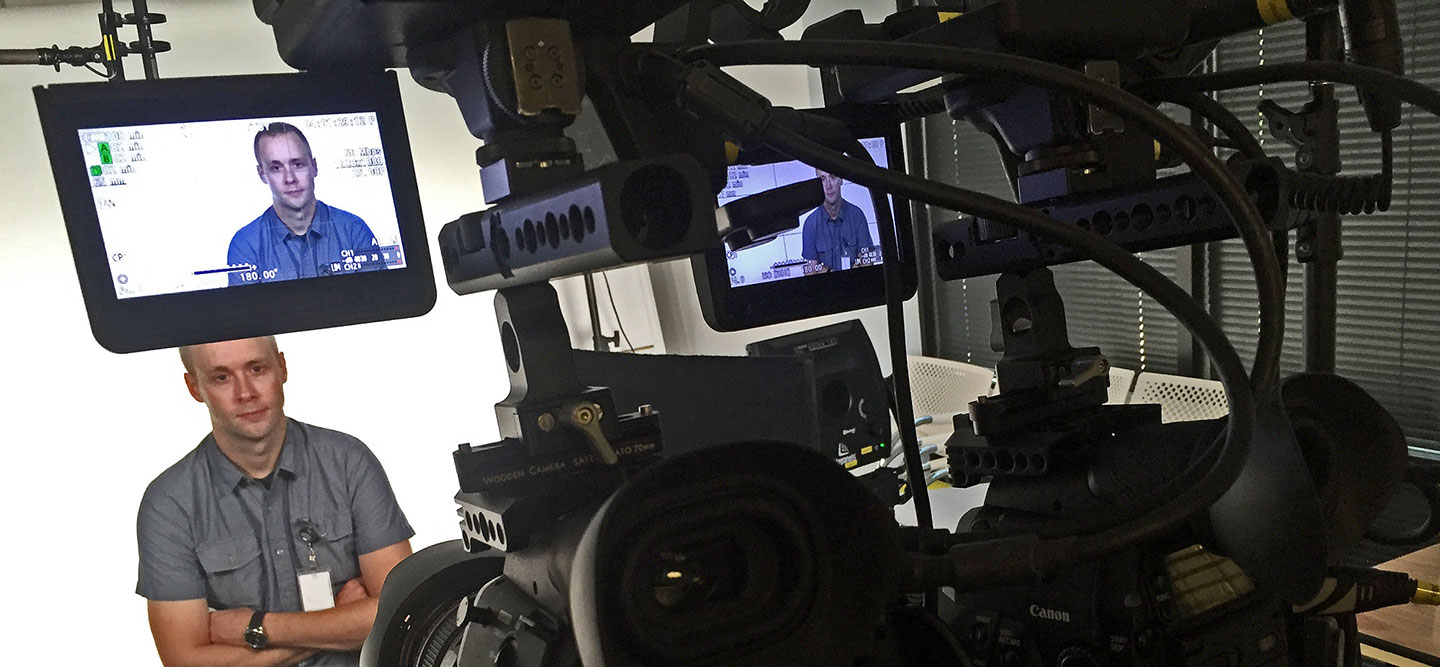Since March of 2014 I have written not once but three times about third-party handles for the Canon C300, plates or rails for mounting the camera to quick-release platforms, and cold shoes for attaching the C300’s monitor or other accessories. Canon C300: Hoods & Rails x3, Getting a Handle on It, and Handles, Plates, and Rods. It’s all been an attempt to compensate for the C300’s somewhat shaky OEM handle and to provide a quick effective means of safely transferring the camera between platforms – tripod, monopod, slider, jib, etc.
While this sounds simple enough the handle options are complicated by the C300 monitor’s two feet (one horizontal and one vertical) which are oversized and have a locking pin.
The journey, as seen in the blog posts, led me to using Kessler Kwik Releases and Really Right Stuff Plates (Really Right Stuff also calls them rails) which took care of mounting and moving the camera between platforms. For the handle, I ended up using Wooden Camera’s C300 top plate with their NATO Handle (Plus). This blog post is an update to those three prior posts, adding information on new components which have proven to be better fits in terms of ease of use and securely mounting the monitor.
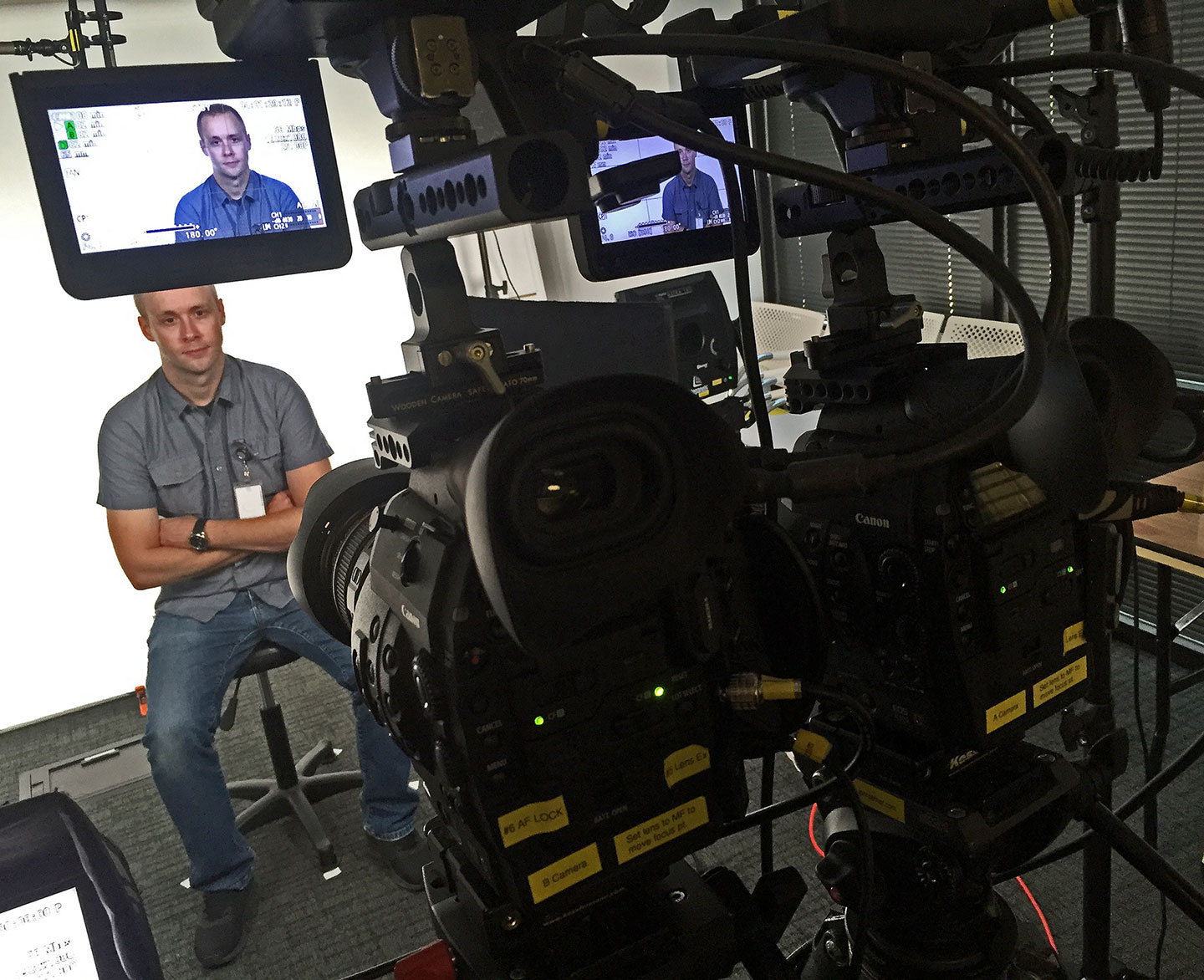
As mentioned, I settled on using Kessler’s Kwik Releases. They have been extremely reliable, easy to use, and their functionality gives peace of mind. They take Arca-Swiss style rails and as a stills shooter turned videographer this has kept consistency with my stills kit. What they add over something like a Really Right Stuff clamp is an active lock in addition to a lock-down bar. The camera snaps into the mount and while it has forward/back movement it cannot slip out. For stills shooting with smaller cameras that action is less of a need, you can see what you are doing when you mount the camera. With larger filmmaking cameras, cages, or built-out kits, the snap-in then lock method works much better.
The Arca-Swiss standard also uses smaller rails than if one is using something like the ubiquitous Manfrotto tripod head plates. Smaller rails also means easier handholding when cameras are taken off tripods or other platforms and easier packing at the end of the day.
Since I wrote my post comparing Arca-Swiss compatible rails from Kessler, Zacuto, and Really Right Stuff in Canon C300: Hoods & Rails x3; Really Right Stuff has come out with a dedicated Canon rail – the BC300. It is designed for Canon’s Cinema EOS Series, the C100/300/500 bodies (not the 1DC). It has matched ¼-20″ and ⅜” holes, a guide pin, and it is perfectly sized to the base of each camera body. It’s also just the right thickness to be rigid without being overbuilt.
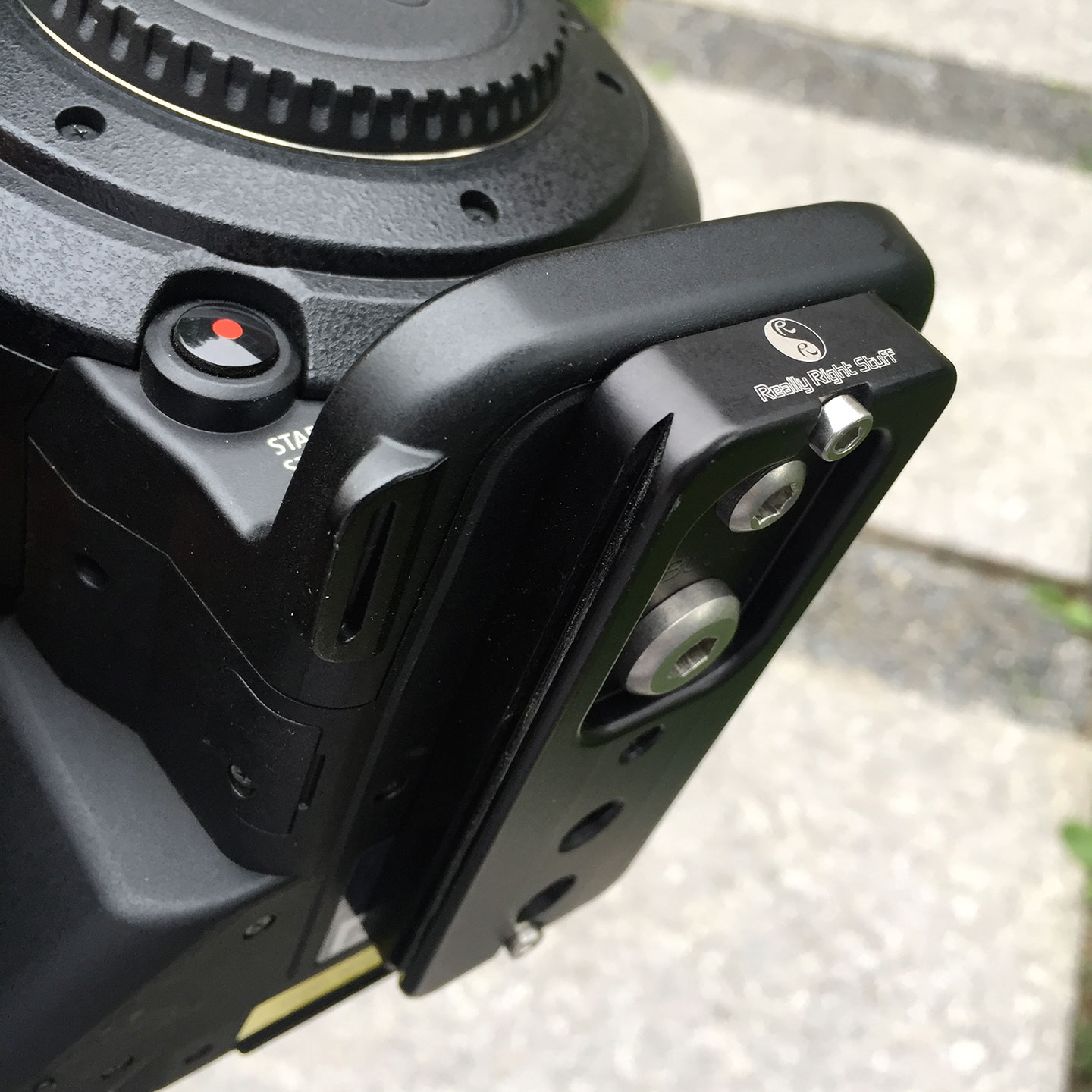
Cold Shoes & Handles
Mounting a Canon C300’s monitor can be something of a pain point if the cold shoe used is not a good fit for the monitor’s locking foot. In Getting a Handle on It and Handles, Plates, and Rods I tried a number of different sources for handles and shoes and settled on Wooden Camera’s NATO Handle (Plus) which has a built-in cold shoe and a SmallRig cold shoe – the latter attached to face of the camera’s top plate and was used when mounting the camera’s monitor via its vertical foot.
The issue I ran into with the original version of the NATO Handle (Plus) was that its built-in cold shoe was too small fit the C300’s monitor’s oversized foot and it had no notch to utilize its locking pin. This setup worked but it always had the potential for the monitor to slip out especially in more active shooting environments. This happened to me a few times and in each case the monitor’s cables saved the day.
The SmallRig cold shoe on the top plate was never a perfect fit but since it was long enough to accommodate most of the C300’s monitor’s foot it was good enough. This issue I ran into with it was when I had to reconfigure my kit and move the cold shoe. SmallRig is a much cheaper brand and as such it uses cheaper grade aluminum – moving the shoe always stripped the shoes’ flathead screwdriver notch. Not good.
Updates from Wooden Camera have helped me address both of these issues. Wooden Camera has a new version of its NATO Handle (Plus). It adds three Arri standard accessory mounts. Two vertical on either side of the handle and one horizontal on top of the handle. Each is a ⅜” hole with four pin points. Accessories such as cold shoes can be added with guide pins to lock them so that they will not rotate. The new NATO Handle (Plus) about ¾” longer than the older version.
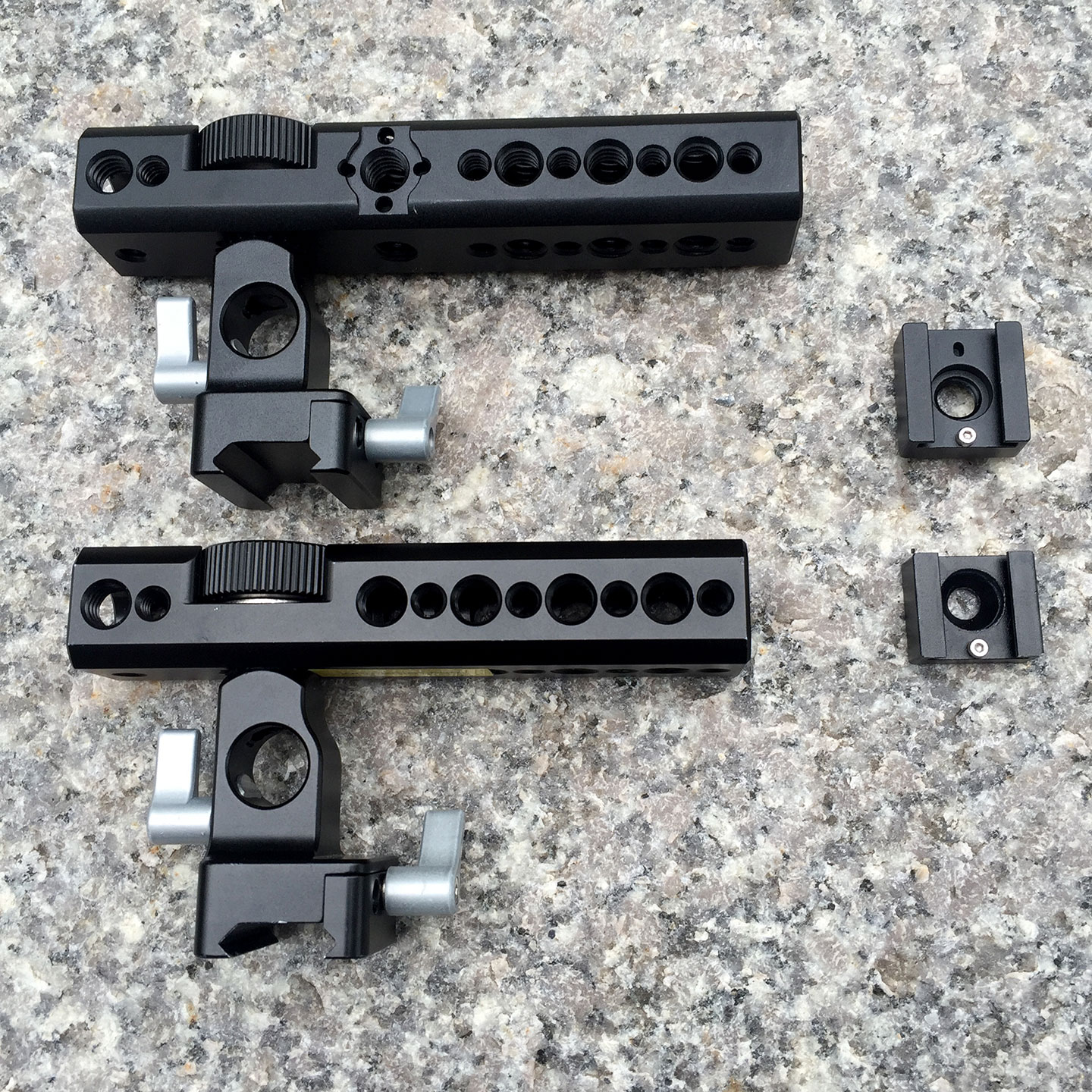
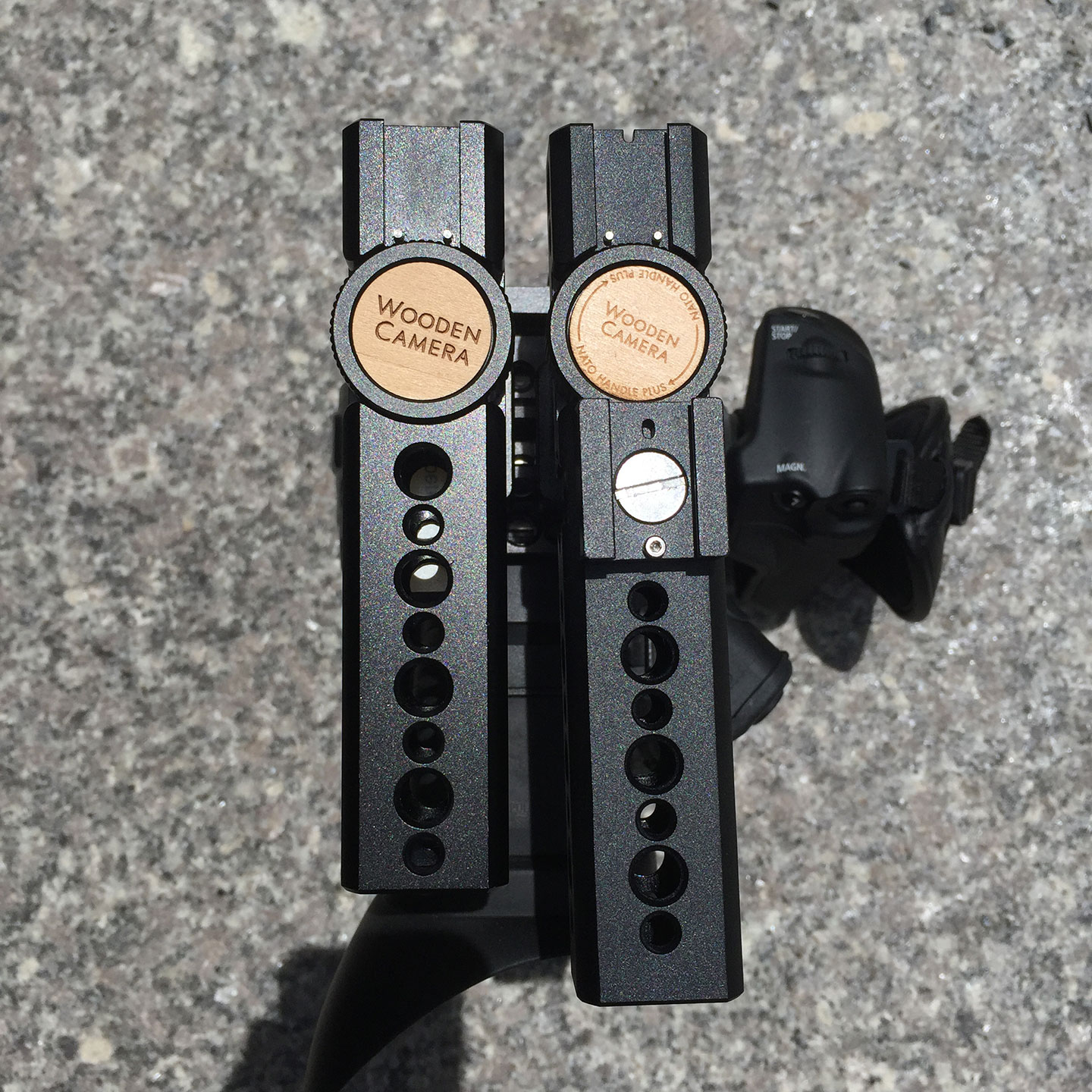
It should be noted that the new version of the NATO Handle (Plus) adds a notch to its built-in cold shoe. This could in theory take the locking pin in the C300 Monitor’s foot but the built-in cold shoe is still too small to take the oversized foot.
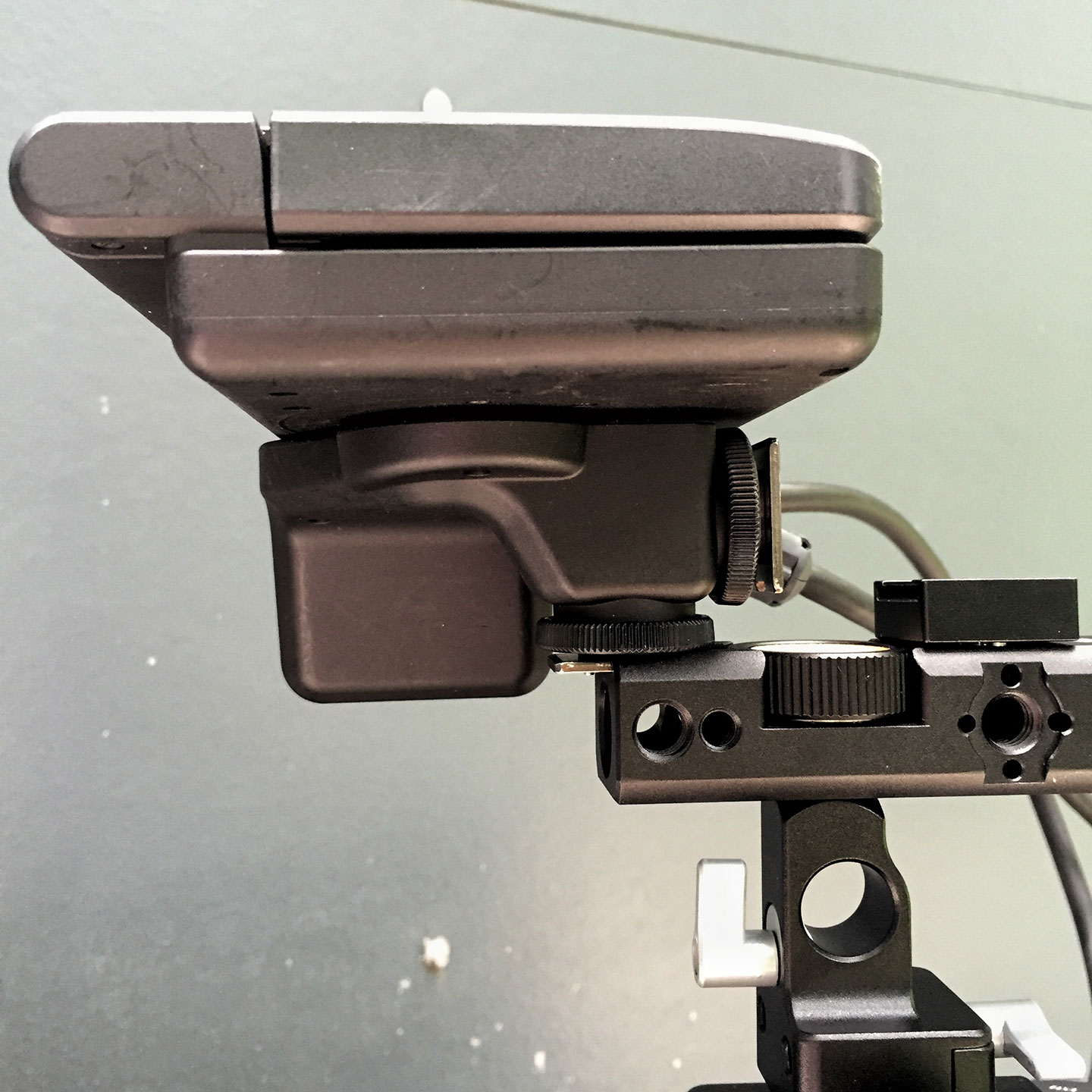
Coming to the rescue is Wooden Camera’s Universal Hot Shoe. It is not only long enough to take the monitor’s foot, it has a notch for the foot’s locking pin, and it has its own guide pins for an Arri standard accessory mount making it anti-twist. This coupled with the new handle makes for a solid slip-free design.

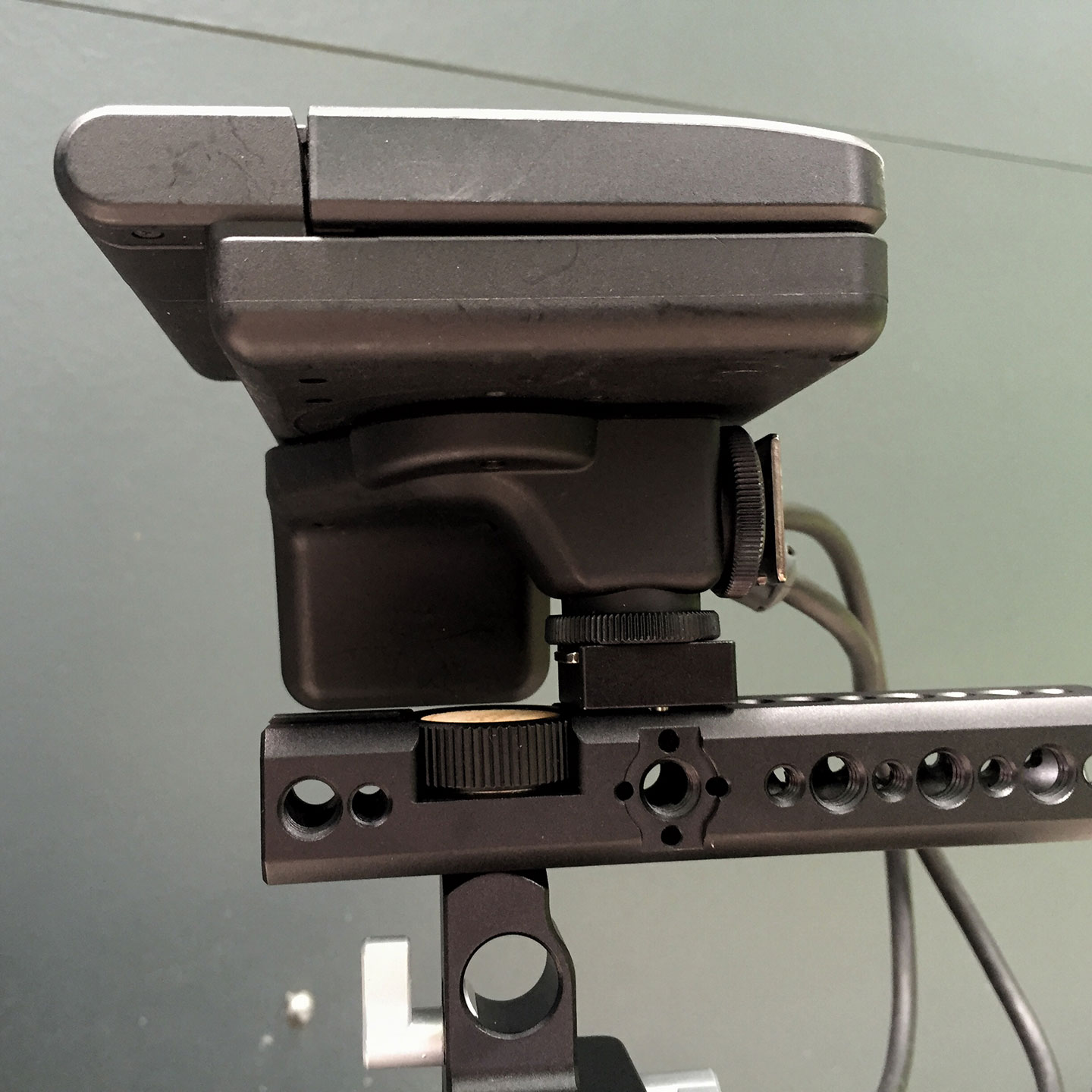
The anti-twist guide pins of the Universal Hot Shoe are removable if you want to use the shoe elsewhere along with some Loctite. I have done this on the front face of the Wooden Camera C300 top plate, replacing the SmallRig cold shoe and keeping the option of mounting the C300’s monitor without a handle. One note: while Wooden Camera calls its shoes “hot shoes” they are cold shoes. They have no electrical contacts.
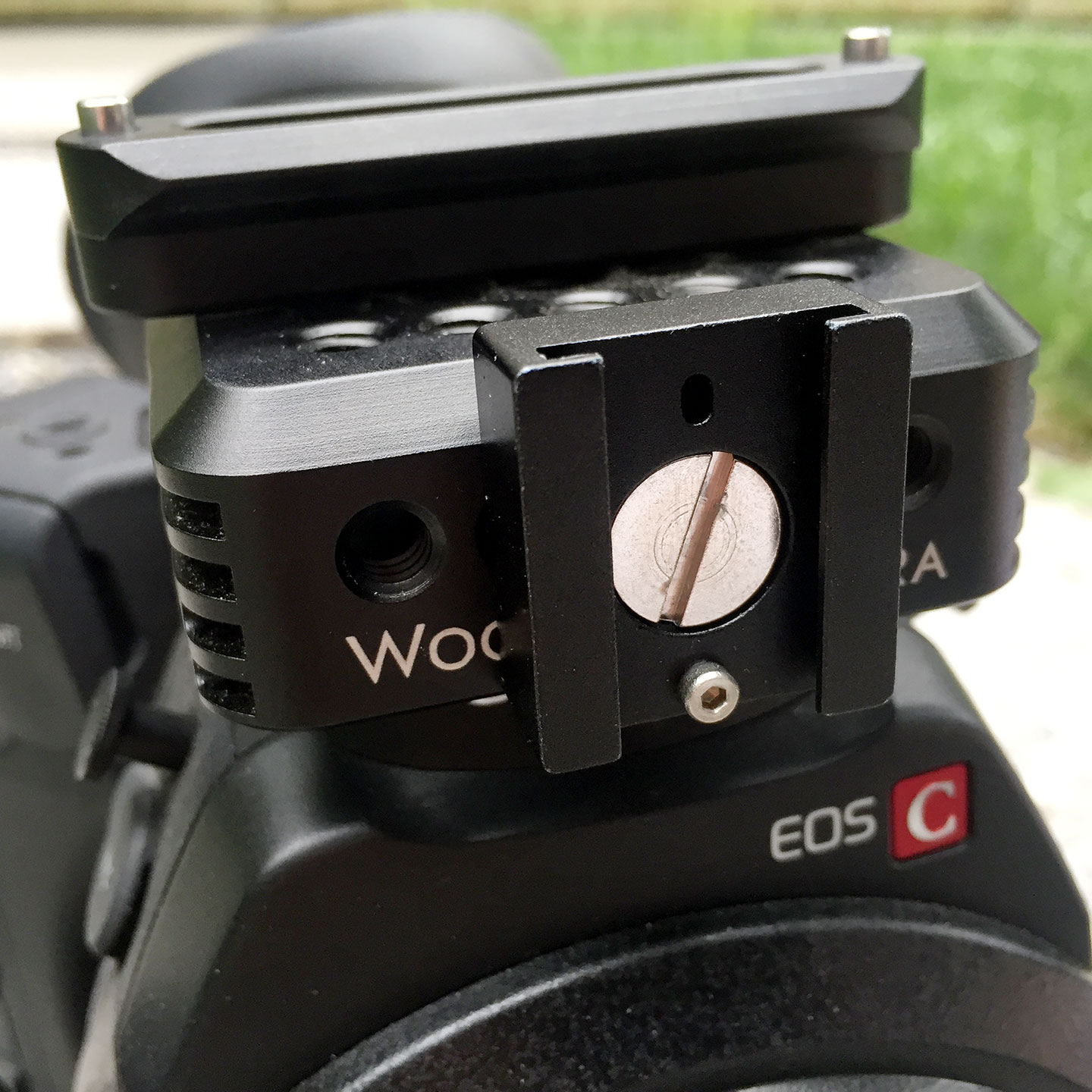
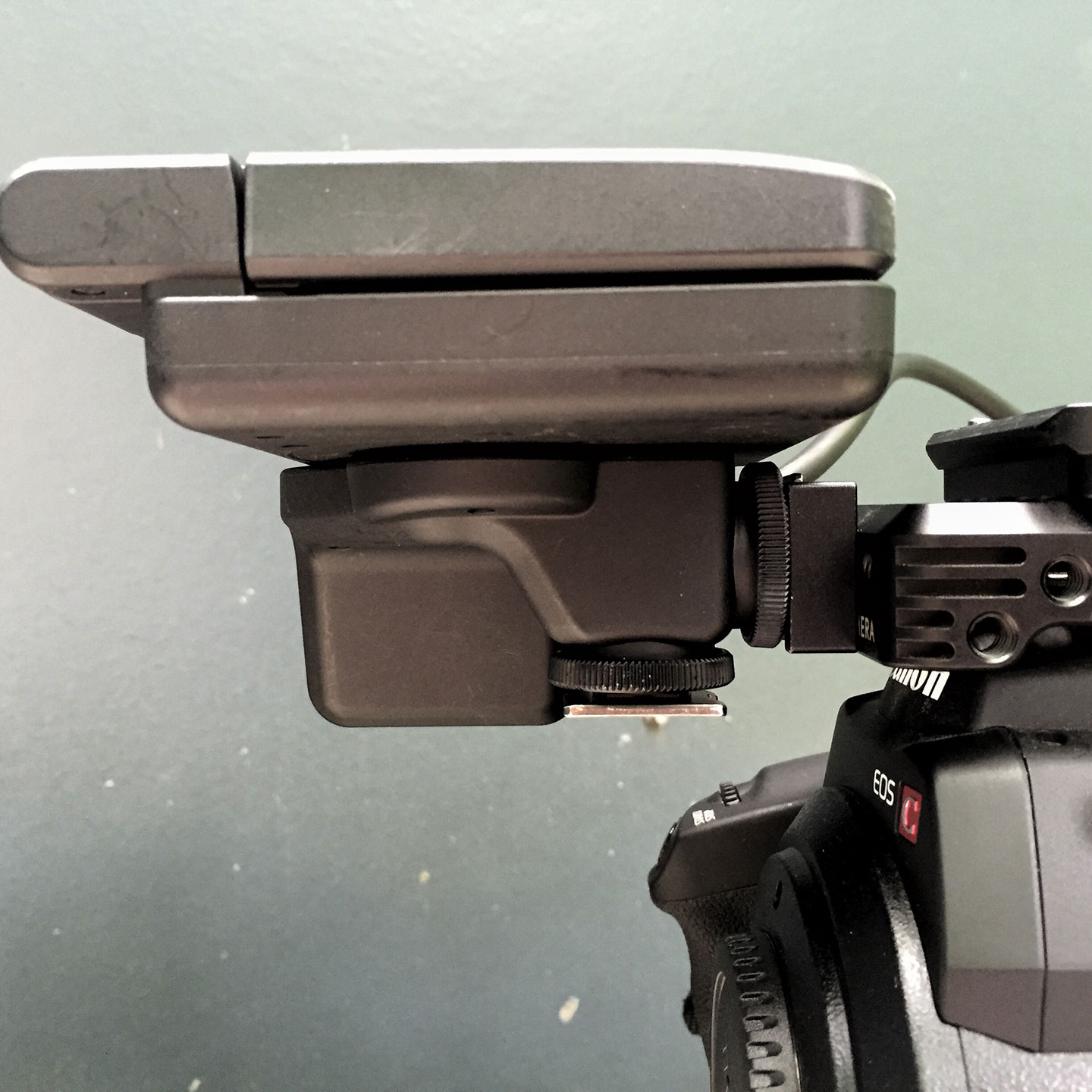
So, now I am up to four blog posts about the nitty-gritty and minutia of connecting the camera or connecting to the camera. Is it worth it? Why not just use the Canon handle and a tripod head quick release plate?
The answer will depend upon your needs and how you shoot. For mounting the camera to a platform, I find using the Arca-Swiss style rail with the Kessler Kwik release a necessity. My cameras are jumping from my Sachtler FSB 8 head or a Manfrotto head for B camera to my jib, to my slider, or to my monopod, etc. They all have a Kwik Release. Either camera can jump to any platform at any time without being reconfigured. It’s all on the same standard and it all just works. Similarly, my jib and my sliders also mount via Arca-Swiss compatible rails.
I never liked Canon’s C300 handle. Besides not being 100% stable it attaches via spring-loaded screw. That screw makes the handle slower to attach or remove. It has also been known to fail. Having a NATO rail based handle makes for quicker setups and it allows for some finesse in the placement of the handle when handholding and balancing the camera via the handle. The cheese stick of the handle has also come in handy many times when a Sound Op is mounting cables or if I am mounting my own wireless receivers.
On shoots as I jump from a tripod to a jib or a slider I often remove the monitor and the handle in order to cut down on the weight and to lower the center of gravity. With my current setup I can quickly strip down the top of the camera and keep working.
